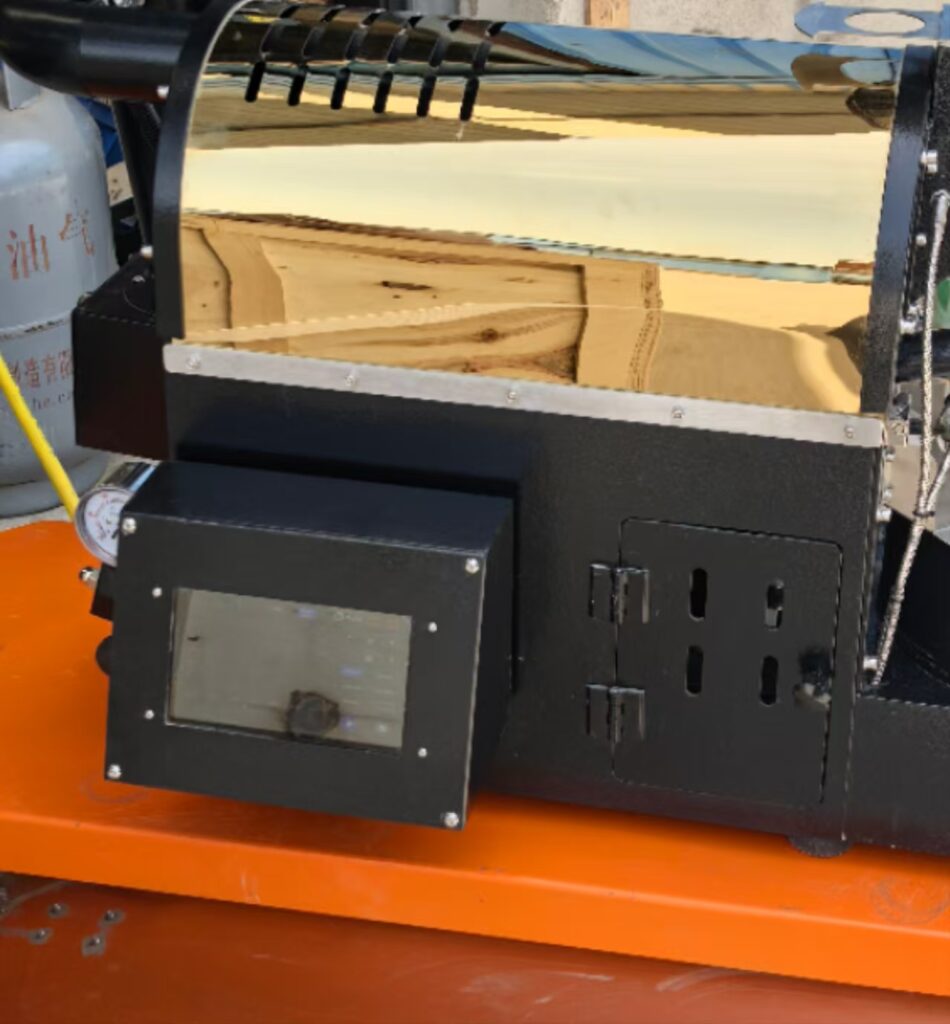The Rising Appeal of Compact Coffee Roasters: Precision, Versatility, and Sustainability
Home coffee enthusiasts are increasingly turning to compact roasting machines to elevate their brewing experience. These devices, designed for small-scale use, offer a blend of technical sophistication and practicality that aligns with modern lifestyles. Below, we explore three key advantages driving their popularity among coffee lovers.
1. Precision Control for Customized Flavor Profiles
Compact roasters empower users to fine-tune every stage of the roasting process. Unlike pre-packaged beans, which may lack freshness or depth, these machines allow for real-time adjustments to temperature, airflow, and roast duration. Advanced models integrate multi-sensor systems that monitor bean temperature, air velocity, and heat distribution, ensuring consistency across batches.
For instance, some devices use infrared sensors to track bean surface temperature, complementing traditional probes that measure internal heat. This dual-layer monitoring reduces the risk of under-roasting (leading to grassy flavors) or over-roasting (resulting in burnt notes). Users can experiment with light, medium, or dark roasts, tailoring acidity, sweetness, and body to personal preferences. The ability to replicate profiles via digital interfaces further simplifies the process, making it accessible even to beginners.
2. Space-Efficient Design for Home and Small Business Use
Urban dwellers and small café owners face space constraints, making compact roasters an ideal solution. These machines prioritize vertical or modular designs, minimizing countertop footprint while maintaining functionality. Some models feature detachable components, such as chaff collectors or cooling trays, for easy storage.
Despite their size, they often match the capacity of larger units, processing up to 500 grams per batch. This efficiency is achieved through optimized heat retention systems, such as ceramic-lined chambers or dual-wall insulation, which reduce energy waste. Additionally, smoke filtration technology addresses ventilation concerns, allowing indoor roasting without compromising air quality. For those seeking portability, certain models offer battery-powered options or lightweight builds for on-the-go use.
3. Cost-Effective and Sustainable Coffee Production
Purchasing green coffee beans in bulk is significantly cheaper than buying pre-roasted options, offering long-term savings for frequent drinkers. Compact roasters also reduce packaging waste, as users can store beans in reusable containers. Environmental benefits extend to energy use: electric models with smart heating algorithms consume less power than commercial gas roasters, lowering carbon footprints.
Moreover, the ability to roast small batches minimizes food waste. Instead of discarding stale pre-roasted beans, users can roast fresh quantities as needed. Some advanced systems even incorporate AI-driven tools that analyze roast data to suggest optimal parameters, further improving resource efficiency. For eco-conscious consumers, this combination of affordability and sustainability makes home roasting a compelling choice.
Enhanced User Experience Through Technology Integration
Modern compact roasters blend tradition with innovation, offering features like mobile app connectivity for remote monitoring. Users can adjust settings, save custom profiles, and share recipes within online communities. Tutorials and real-time feedback systems guide novices through the roasting process, reducing the learning curve.
Safety enhancements, such as automatic shut-off mechanisms and overheating protection, provide peace of mind. Cleaning is simplified through self-cleaning cycles or dishwasher-safe components, addressing a common pain point in kitchen appliances. These thoughtful designs reflect a shift toward user-centric engineering, where functionality meets convenience.
Conclusion: A Gateway to Artisanal Coffee at Home
Compact coffee roasters democratize access to specialty-grade coffee, enabling enthusiasts to explore origin flavors and roasting techniques without professional equipment. Their precision, space efficiency, and sustainability align with evolving consumer demands for quality, affordability, and environmental responsibility. As technology advances, these machines will likely incorporate more AI-driven features, such as predictive roasting algorithms and real-time flavor profiling, solidifying their role in the future of home coffee culture.


